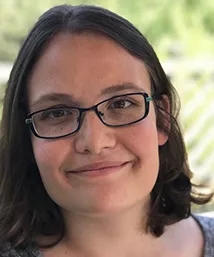Two Faculty Members, Postdoctoral Researcher Receive NIH Grants

Two Swarthmore College science faculty members and a postdoctoral researcher received distinguished grants from the National Institutes of Health (NIH).

Associate Professor of Biology and Adjunct Associate Professor of Physics & Astronomy Eva-Maria Collins was awarded three grants from the NIH. These grants support her research program, which uses behavioral measurements in planarians, or flatworms, to study how chemicals affect brain function and test possible treatment options for chemical poisoning.
The NIH Chemical Countermeasures Research Program (CCRP) awarded Collins with $192,258 to support the development of a cost-effective platform for screening possible therapeutics to treat acute toxicity induced by organophosphorus compounds, like nerve agents and pesticides. Acute chemical exposure arising from terrorist attacks or accidental poisonings poses a serious threat to human health. However, current treatment strategies are not suitable for administering to large civilian populations. Collins' research aims to accelerate the discovery of new therapeutics to better prevent mass casualties.
The National Institute of Environmental Health Sciences (NIEHS) awarded Collins two grants: one of $394,942 and one of $139,497.
The first grant will support the extension of an ongoing project to determine the mechanisms by which organophosphorus pesticides are toxic to the developing brain. Studies have suggested that chronic prenatal and infant exposures to low levels of these pesticides can lead to neurological damage and behavioral disorders, but demonstrated causal connections between the two are sparse. Collins’ research aims to study cause-and-effect connections to determine how organophosphorus pesticides cause developmental neurotoxicity.
The other NIEHS-funded project is computational research that Collins conducts in collaboration with Associate Professor of Computer Science Ameet Soni. Using data generated in the Collins Lab, this project aims to fill a critical data gap by optimizing rapid behavioral screening in planarians to identify neurotoxicity and developmental neurotoxicity.
All three projects provide unique research opportunities in toxicology for Swarthmore students across multiple disciplines. Swarthmore students will be supported by experienced and dedicated staff scientists in the Collins Lab to ensure safe and meaningful student research experiences.

Associate Professor of Mathematics & Statistics Joshua Goldwyn is a co-investigator on a grant sponsored by the NIH and awarded to Northeast Ohio Medical University (NEOMED). The project investigates the cellular properties of neurons in the brainstem, with the aim of understanding their role in sound localization. Goldwyn collaborates with colleagues at NEOMED to develop computational models of these neurons, informed by their latest data and experiments. This research has the potential to impact people with hearing loss or auditory processing disorders that impinge upon speech comprehension in noisy environments.

Postdoctoral Researcher Hannah Gruner was awarded a F32 fellowship grant of $221,922 from the National Heart, Lung, and Blood Institute (NHLBI). Under the guidance of Associate Professor of Biology Bradley Davidson ’91, Gruner’s fellowship seeks to understand how the heart is formed while animals mature.
Gruner’s research background is largely in neuroscience and RNA biology, while Davidson’s background is in heart development in Ciona robusta, also called "sea vases" or "sea squirts." Sea squirts are the closest marine invertebrate relatives to humans, so studying sea squirt development provides insight to how humans develop.
By combining their expertise in neuroscience and heart development, Davidson’s lab is gaining a better understanding of the role of the brain inheart development. Gruner and Bradley are in the process of preparing a research paper with a team that includes five of Gruner’s Swarthmore student mentees. The students have contributed by providing original research data.



